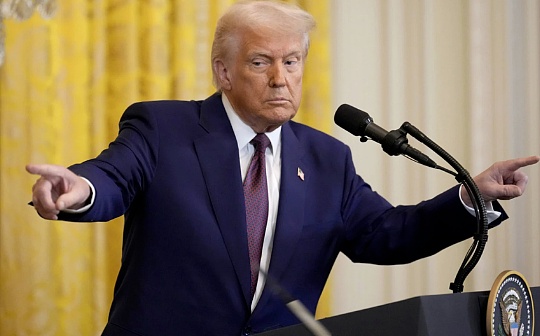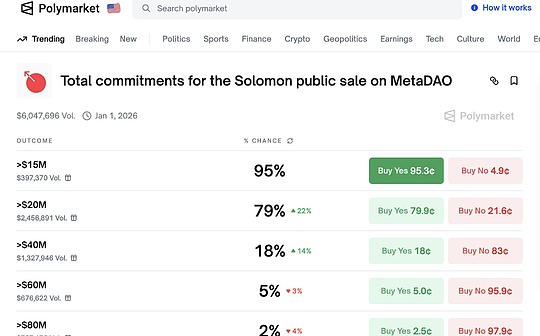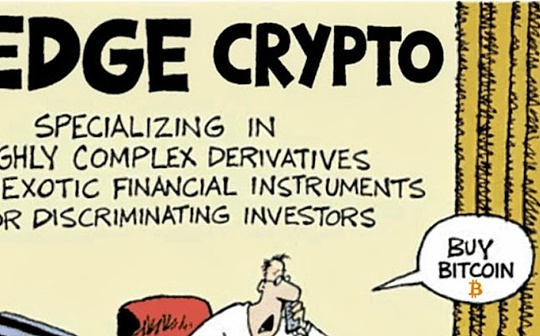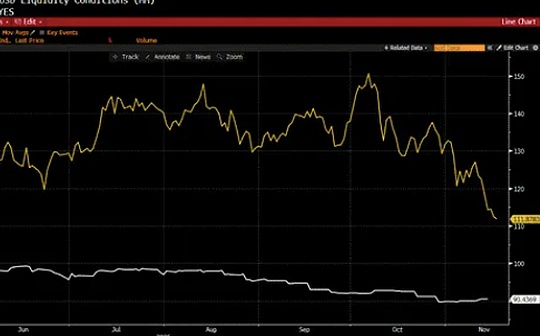
October is approaching, and 2025 has passed three quarters.The narrative of the crypto industry experience in the past nine months has been magnificent.This article reviews major events in the crypto industry since the beginning of the year.
1. U.S. regulation is in good wind: From crypto president to Project Crypto
On January 20, Trump was sworn in and became the first “crypto president” in American history.Since then, the US’s crypto-regulatory policy has ushered in a new vitality.
On March 7, Trump signed an executive order to establish strategic Bitcoin reserves.There are many reasons that prompted the U.S. government to establish strategic Bitcoin reserves.In addition to consolidating the hegemony of the US dollar and fighting inflation, from the perspective of financial innovation demand, Bitcoin and blockchain have brought new development opportunities to the financial industry; starting from the global financial competition, just as mentioned in this executive order, “the countries that are the first to establish strategic Bitcoin reserves will gain strategic advantages”; from the perspective of the interests of the US authorities, Trump is fulfilling his promises during the campaign, and the influence of the relevant interest groups in the Trump administration team has been significantly improved, which has had some impact on government decision-making.
On April 22, Paul Atkins officially replaced Gary Gensler as chairman of the US SEC.After Atkins took office as SEC chairman, he proposed Project Crypto, which is considered the clearest crypto strategy for U.S. regulators to date.Its main themes include: clarifying that most digital assets are not securities, reducing legal uncertainty; eliminating complex supervision, that is, clarifying the financial and legal attributes of crypto tokens as commodities, avoiding cumbersome review of case by case; supporting on-chain capital raising, making it possible to compliant tokenized markets; establishing a stablecoin and on-chain settlement system to promote the dominance of the US dollar in the crypto market; promoting cross-institutional cooperation (with the CFTC, the Treasury Department, and the White House working group); supporting crypto innovation, and even supporting an integrated platform for transactions, pledges and lending to improve financial efficiency.
Since then, the SEC has changed its previous serious attitude towards cryptocurrencies because of Paul Atkins’ takeover.On May 12, Atkins delivered its first crypto keynote speech at the SEC’s “Tokenized Crypto Working Group Roundtable”, proposing the core goal of “paving the way for crypto assets to be in the US market”; September 15: Atkins made it clear in an interview with the media that the SEC will completely abolish the “radical law enforcement agenda” during the Gensler period and turn to “a more friendly regulatory approach to the business community”; on September 17, the SEC issued a historic decision – approving the “general listing standard” of exchange-traded products (ETPs) for spot commodities (including digital assets), marking the official access of crypto assets to mainstream US financial markets.
Details can be viewed“New Changes in Global Financial Order: US Strategic Bitcoin Reserve”
“Paul Atkins: The Leader of Project Crypto, the Liberal Economy”
2. Encrypted roller coaster under the tariff war
In April 2025, US President Trump launched a tariff war.China and the United States were at a temporary strife, and the reciprocal tariffs once exceeded 100%.Geopolitical tensions have led to a sharp drop in cryptocurrency market.Trump’s tariff stick has significantly affected the trend of the crypto market in the short term.During the Trump tariff war, Bitcoin fell from above $100,000 to $75,000.
On July 31, after three months of standoff, the United States surrendered.The White House issued an executive order, re-setting the “reciprocal tariff” tax rate standard for some countries: the state will apply individual tax rates in Annex 1 to the Executive Order, and the state that does not include a tax rate uniformly applies a 10% tax rate; if any country or region evades tariffs through third-place transshipment, its goods will be subject to a 40% transshipment tax.The White House announcement said the new tariffs will take effect on August 7.
In the short term, tariff policies have negative impacts on the crypto market, but in the long term, the impact is even positive.In this case, the reason for choosing Bitcoin is simple: When the international situation is tense and the global monetary system is in turmoil, investors can find a scarce, global means of digital value storage that is not controlled by any government or entity through Bitcoin.
Details can be viewed“Bitwise: What does the Trump tariff stick mean for Bitcoin”
3. DAT craze
As of the end of August, more than 150 listed companies around the world have announced themselves as Bitcoin treasury companies.From July to September this year, the DAT boom ushered in a period of concentrated outbreak.Cryptocurrencies such as BTC, ETH, SOL, ENA, DOGE, and HYPE are favored by many companies from traditional industries or crypto industries.
For example, giants such as Strategy and Metaplanet hold a large amount of BTC as reserve assets for treasury; companies such as SharpLink, The Ether Machine, ETHZilla hold a large amount of ETH as reserve assets; companies such as Forward Industries, Sol Strategies, Sharps Technology hold a large amount of SOL…
And almost without exception, the company’s crypto strategy and stock prices show a strong positive correlation in the short term. For almost all companies, financing and purchasing coins through issuing stocks, convertible bonds and preferred shares is often regarded as long-term confidence in cryptocurrencies in the short term.However, due to the lack of long-term value support, the rising market is often a flash in the pan.
Details can be viewed“From BTC, ETH to altcoins, corporate treasury is setting off a cryptocurrency”
“Crypto-Treasury Strategy: BTC Hoarding VS Altcoin Pharmacy Who Should Investors Believe in?》
4. The Genius Act and Stablecoin War
On September 25, the total market value of stablecoins exceeded US$300 billion, setting a record high.Since the Crypto Asset Market Regulations (MiCA) came into effect in June last year, the stablecoin market has heated up rapidly, and corresponding bills have been issued in China, the United States and Europe, and giants are also rushing to lay out the stablecoin track.
On May 21, the Hong Kong Legislative Council officially passed the “Stablecoin Bill” in its third reading.This means that Hong Kong will formally implement stablecoin regulation.Anyone who issues fiat currency stablecoins in Hong Kong or issues fiat currency stablecoins that claim to anchor the value of the Hong Kong dollar in or outside Hong Kong must apply for a license from the Hong Kong Financial Management Commissioner.According to the current progress, the crypto industry may see the birth of a compliant Hong Kong stablecoin in the crypto industry before the end of 2025.
On June 17, the U.S. Senate passed the landmark GENIUS Act, which promoted the U.S. federal government’s regulatory efforts on stablecoins and put pressure on the House of Representatives to plan the next phase of its national efforts to regulate digital assets.This is another major progress in the stablecoin field this year, following the passage of the Hong Kong Stable Coin Act.
On March 25, World Liberty Financial (WLFI) issued USD1; on August 19, Japanese stablecoin issuer JPYC obtained a Japanese “Fund Transfer Service Provider” license, saying that this is the first time that Japan has issued such a license to digital currency issuers; on September 15, MetaMask announced the launch of the stablecoin MetaMask USD (mUSD).
At the same time, the stablecoin chain track is also worth paying attention to.On August 12, Circle announced the launch of Arc, an open Layer-1 blockchain designed specifically for stablecoin financial scenarios; on August 11, fintech giant Stripe cooperated with crypto venture capital Paradigm to develop a high-performance, payment-focused first-tier (Layer 1) blockchain called “Tempo”; in February this year, stablecoin company Plasma raised $24 million to develop a new blockchain for Tether’s USDT.
Details can be viewed“Sorting of the China-US and European Stablecoin Regulation Act What giants are planning?》
“Stablecoin Chain Track Heating: Giants Layout Logic and Related Projects Completely Clarified”
5. The Federal Reserve restarts interest rate cuts
On September 18, the Federal Reserve lowered the benchmark interest rate by 25 basis points to 4.00%-4.25%.”In the short term, inflation faces upward risks, and employment faces downward risks,” Powell said at the press conference.
A key reason why the Fed is in its current dilemma is the change in its policy logic: in the past few years, the Fed adheres to the principle of “data dependence” (i.e., to formulate monetary policies based on economic data), but recently it has tended to play the role of “economic forecaster”.Originally, it only needed to formulate monetary policies based on existing economic data and real-time indicators, but the Federal Reserve chose to enter the “prediction field” and even took action based on the prediction that “tariffs will push up inflation.”The Fed’s policies have always “lagged behind the market curve.”
Details can be viewed“Feder rate cuts: Bitcoin’s enlightenment and enjoying future market conditions?》
6. The rise of Perp DEX
Since its launch in 2023, Hyperliquid has been recognized as a CEX killer in just two years.HYPE is one of the best performing altcoins today, with HYPE already rising only 70% in the past three months, and Arthur Hayes has predicted HYPE will rise 126 times over the next three years.
As Hyperliquid gradually squeezes out the market share of old exchanges, CZ supports Aster, Justin Sun quickly promotes SunPerp, and the new generation of Perp DEX hopes to get a share of the pie with Hyperliquid by increasing derivative trading products.Hyperliquid is facing challenges from Aster and SunPerp, and the future landscape of DEX may be on the road to being reshaped.
Details can be viewed“Hyperliquid is a CEX killer?CEXs start to fight
Is HYPE’s future rising by 126 times in three years?》
7. The era of stock tokenization begins
The RWA boom continues and really builds a bridge to connect the crypto industry with traditional finance.Many market participants, including Nasdaq, believe that stock tokenization may benefit investors, issuers and the broader economy.
On June 30, Robinhood officially launched stock tokenization services in the EU, focusing on “compliant mainstream assets”, covering more than 200 US stocks and ETFs in the initial stage, and also launched tokens for non-listed companies such as OpenAI and SpaceX.On the same day, xStocks launched by Backed Finance was officially launched, and the first batch of issuances cover more than 55 stocks and ETF assets, including stocks of companies such as Apple, Microsoft, Nvidia, and Tesla.On September 8, Nasdaq submitted a document to the U.S. SEC to facilitate trading of tokenized securities on the Nasdaq stock market.Nasdaq’s tokenized stock transactions are introduced into on-chain mapping at the settlement layer, and transaction matching is still completed in the same order book. It is planned to realize on-chain settlement function in the third quarter of 2026.
As crypto finance gradually matures, it may not be that important whether the tokenized stock model itself can be really successful. What is important is whether traditional finance can ultimately respond to investors’ all-round needs as quickly as crypto finance.
Details can be viewed“Stock Tokenized Trading Nasdaq Interpretation of Nasdaq”
8. BTC broke through $120,000, ETH reversed to $4,000, and BNB broke through $1,000
On July 14, BTC broke through the $120,000 mark.Global currency liquidity reached a 12-year high. BTC Holder is reluctant to sell, investors are planning “rate cut transactions” in advance, Trump’s big and beautiful bill raises debt ceilings, and DAT’s strong buying has driven BTC’s rise to a gratifying rise.Matt Hougan, chief investment officer of Bitwise, expects Bitcoin to reach $200,000 by the end of 2025; ARK Invest CEO Cathie Wood believes that BTC prices will grow 15 times over the next five years.
In April, ETH ushered in an upward trend.From the annual low of $1385 on April 6 to $1750 on April 23, an increase of 26.3%, with a maximum daily increase of even more than 10%.Recently, ETH has stood firm at $4,000, and even rose to a high of $4,762, an increase of 243.83%.A series of factors such as favorable regulatory policies, Pectra upgrades, Ethereum treasury reserve trends, and Trump’s signing of the GENIUS bill to push the stablecoin regulatory legislation into the implementation stage have driven ETH to rise continuously.
On September 18, BNB broke through $1,000, setting a record high.In 2017, BNB was issued at a price of 2700 BNB per 1 ETH or 20000 BNB per 1 BTC, which was about $0.11 at the time.After eight years, BNB finally stood at $1,000, up nearly 10,000 times, and was proud of the crowd.
Details can be viewed“BTC breaks $120,000 mark: What are the positives?How much does this market see?
9. The coin issuance trend led by Binance Alpha
Binance Alpha triggered a wave of coin issuance this year and became a “richmaker” in the bull market.In March, Alpha 2.0 was launched; in June, Binance Wallet launched the “Pre-TGE Booster” mechanism, where retail investors can subscribe tokens at preferential prices (similar to institutional-level investments) through Pre-TGE, and obtain free airdrops by completing simple interactions through Booster mechanism; in September, Binance Alpha entered the “points screening + directional airdrop” stage.
According to CoinMarketCap data, Binance Alpha has launched 305 tokens.Although the wave of issuing coins is still hot, at the moment when the pool is expanding rapidly, if the entry funds cannot provide enough support, how far can this bull market go?
Details can be viewed“Binance Alpha Bull Market: A One-sided Game Dominated by Market Makers”
10. Circle is on the market
Circle was listed on the New York Stock Exchange on June 5.The stock code CRCL, the stock price soared over 160% on the first day, with a market value of $21.5 billion.
“Now that Circle has revealed Wall Street’s interest, I suspect we will see several cryptocurrency companies accelerating their IPO plans,” said Carlos Guzman of GSR. FalconX, Gemini, Bullish, BitGo, Kraken, Bithumb, Bitkub, Figure and others.
Details can be viewed“After Circle goes public, which other crypto companies are preparing for IPOs?Why are they going public in a crowd?》
11. Bitcoin 2025 Conference
On May 28, the “Bitcoin 2025 Conference” was held, and politicians such as Vance delivered speeches.”Bitcoin will become a strategic asset in the United States over the next decade,” Vance noted.
“When people are free to use something, it will eventually be incorporated into traditional financial products. We need to think about how it interacts with our regulatory frameworks – but the key is to maintain people’s ability to transfer value as they wish,” said SEC Commissioner Hester Pierce.
“We are steadily moving toward becoming a world’s Bitcoin superpower. It’s not about partisans, but a revolution in the financial system,” said Bo Hines, executive director of the White House.
“We are committed to reinvesting large amounts of funds in Bitcoin. Our company currently holds more than 100,000 bitcoins. By the end of this year, Tether will become the world’s largest bitcoin miner, even surpassing all publicly traded companies, which is very realistic.”
Details can be viewed“A quick look at 21 Golden Sentences of Bitcoin 2025”








